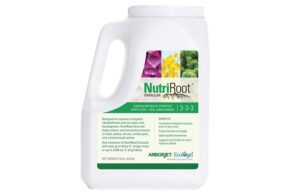Turf MD: A classic fungicide

Karl Danneberger
Old school is a term used to describe people who do the same thing the way it always has been done. Old school and, more specifically, old things that were popular years ago and ended on the scrap heap of history have seen a resurrection in demand and popularity among current generations, especially the millennial generation. A commonality of old school items, as a group, is that they predate today’s digital world.
Old school is defined in actions or items like vinyl records that have had a rebirth in our current culture. In a music world of streaming and high-quality digital delivery methods, vinyl records, which basically died out in the late 1980s and early 1990s, have seen a revival among young listeners. A few of the reasons given for vinyl popularity include the facts that you can hold it in your hands and that other options don’t produce a perfect sound. Old school stuff tends to be viewed as unique and nonconforming.
In golf, we see trends in the business, but those are associated with new advancements in the profession. When looking for the next best practice or product, we tend to not look back at old-school ways. However, in designing and implementing management programs, we use products and practices that have been around for decades that have not lost a significant amount of popularity.
For example, fungicide programs are continually evolving on a yearly basis. New modes of action or fungicide combinations are inserted into the program, replacing older products based on factors like efficiency and efficacy. Intermixed with newer fungicides are older ones. These older products are not old school in the sense they never lost favor due to a new trend but have achieved the status of traditional or classic components of a program.
For example, strobilurin fungicides are broad-spectrum fungicides that are important in the control of certain turf diseases. Strobilurins are effective on some of the root-infecting pathogens that cause patch diseases. Prior to the arrival of the strobilurin, controlling patch diseases with available fungicides was not very effective, and control with some patch diseases was dependent on cultural practices.
The original strobilurin was discovered by scientists in 1977. Named initially strobilurin A, this fungal antibiotic was produced by the pine cone fungus Strobilurus tenacellus. It’s believed that this wood-rotting fungus, and similar fungi, produced strobilurin to help protect it from microbes present in the wood. In 1997, the strobilurin — an azoxystrobin — came to market.
Over the years, researchers enhanced the natural strobilurin synthetically, leading to the class of fungicides known as strobilurins. Strobilurins are more properly referred to as QoI fungicides. The Qo is part of the Q cycle found in mitochondria respiration. QoI fungicides inhibit fungal respiration by attacking the site Qo, which is part of the Q cycle in the mitochondria cytochrome system. The effect is that energy in the form of adenosine triphosphate (ATP) is not produced.
The QoI fungicides’ mode of action is specific. Fungal resistance can occur with a single-site mutation. The first reported case of resistance globally occurred one to two years after the commercial release of azoxystrobin. Although QoI fungicides have a similar mode of action, they do differ in regard to the molecule itself, leaf absorption and transportation within the plant and diseases controlled. When applied correctly, they are extremely effective and remain an integral part of fungicide programs.
For more than 26 years, the QoI fungicides have been used professionally and properly to maintain turfgrass diseases on both cool- and warm-season turfgrasses. Over this period, the QoI fungicides have never lost favor in the industry or been subjected to the ups and downs of trends. This is one of the fungicide groups that will go down in the history of golf course management as a classic.









